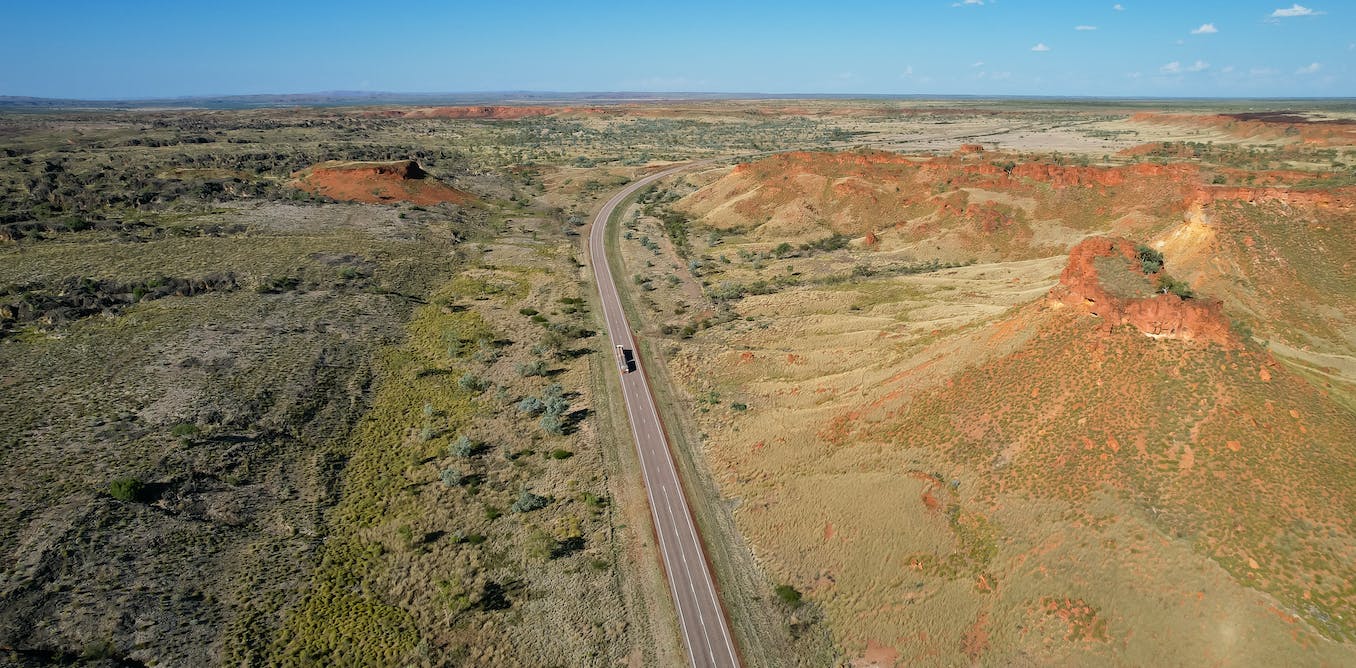On January 12 a truck pulled out of Rio Tinto’s Gudai-Darri iron ore mine in the Pilbara region of Western Australia and drove 1,400km south to Perth, arriving on January 16.
Nine days later, on January 25, it was discovered the truck had lost a rather special piece of cargo somewhere along the way: a tiny capsule containing a highly radioactive substance, used in a radiation gauge on the mine site.
A bolt and screws in the package were also missing, and authorities suspect the fixings shook loose during the trip and the capsule fell out of the hole left by the bolt.
Western Australia’s Department of Fire and Emergency Services are now searching for the missing ceramic capsule, which at 8mm by 6mm is smaller than a ten-cent piece.
What is the capsule and what was it used for?
The capsule contains caesium-137, a radioactive isotope which spits out electrons (or beta radiation) and high-energy photons (or gamma radiation). The beta radiation is blocked by the shell of the capsule, but the gamma radiation streams right through it.
The source has an activity of 19 gigabecquerels, which means it emits about 19 billion high-energy photons per second.
Caesium-137 is dangerous stuff, but the radiation it produces can also be very useful. It is used in some cancer treatments, for measuring the thickness of metal or the flow of liquids, and – as in this case, reportedly – for calibrating radiation gauges.
Radioactive sources are common, but they rarely go missing
Transporting radioactive sources is a commonplace activity. Each month, the Australian Nuclear Science & Technology Organisation (ANSTO) ships some 2,000 packages containing nuclear medicine around Australia. There are also several private companies who transport radioactive sources.
There are well-established procedures and strict regulations for making sure this happens safely. At the national level, this is overseen by the Australian Radiation Protection and Nuclear Safety Agency (ARPANSA), while each state and territory also has its own regulator.
Are bananas really ‘radioactive’? An expert clears up common misunderstandings about radiation
You need a licence to own and use a radioactive source at a particular location. If you’re moving it, you need to follow detailed rules for safety, packaging and record-keeping.
Radioactive sources which are lost, stolen, or otherwise leave regulated control are known as “orphan sources”. Each year, the CNS Global Incidents and Trafficking Database records 150 or so such incidents around the world.
Most of these incidents are due to carelessness or disregard for proper procedures.
What’s the risk?
The source doesn’t pose much of a danger to casual passers-by. If you were standing a metre away from it for an hour, you would receive a radiation dose of around 1 millisievert. That’s about one-twentieth of the dose people who work with radiation are allowed to get in a year.
If you were much closer to the capsule, say 10cm or so, you’d be getting around 100 millisievert per hour, which could do you some real damage.
Explainer: the difference between radiation and radioactivity
However, the most danger would occur if the capsule were broken open. In an infamous incident in Brazil in 1987, a (much larger) caesium-137 capsule was stolen from an abandoned hospital and punctured. The glowing blue dust inside was a source of fascination to everyone who saw it, of whom 250 were contaminated with radiation and four died.
So if you see a small capsule anywhere along the Great Northern Highway, keep your distance. Don’t panic, but do notify the authorities.
The long half-life of the missing capsule
The search for the capsule will be a difficult one. Just as the source won’t be dangerous unless you’re close to it, it won’t be easily registered by gamma-ray detectors unless they are in close proximity.
Authorities say they now have vehicle-mounted detectors to aid their efforts, but scanning 1,400 km of road is a formidable task. Searchers have conceded “there is the potential that we may not find this”.
What then? Caesium-137 has a half-life of just over 30 years, which means the source’s radiation output will halve every 30 years, until it disappears completely.
It will still pose a risk for the next century or so. Will anyone remember? If you came across a tiny cylinder on the road today, you’d know to keep your distance – but what about if you found it in five years, or in 20 years?
Who remembers Australia’s last orphan source incident? It occurred in 2019, when a radioactive moisture detection gauge was taken from a ute in Ipswich. As far as I know, it has never been found.




